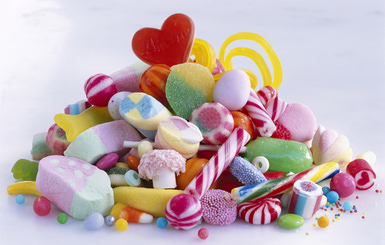
In ancient times, Egyptians, Mesopotamians, and Persians all had their own way of making sweet fruit and nut delicacies, but the rise of the candy creations we know today, came only after the industrialisation of the sugar trade and sugar refining.
Let’s rewind back to the olden days of candy-making. So where does this word ‘candy’ come from you ask? It actually derived from the Arabic word qandi, which means ‘made of sugar’ , and the word’s been in use since the 13th century, when the Egyptians came out with their honey-and-nuts jars of sweets, which were the original form of candy. It’s also said that the ancient Greeks were famous for making candied fruits and flowers during the same period.
During Europe’s Middle Ages, the pricey rate of sugar made candy a delicacy available only to the wealthy folks. By the 16th century, the popularity had grown and cooks and consumers around the world were keen to try out the new sugary trend. It wasn’t until the late 19th century, when factories started making and distributing these treats enmass, that people around the world of every economic condition were able to enjoy them.
Cotton Candy, or as some called it, fairy floss, was invented in 1897 by William Morrison and John. C. Wharton in USA, who also invented the first cotton candy machine. Lollipops, originally spelled lolly pops) came to life a few years later, in 1908 when George Smith invented the treat-on-a-stick and named it after his beloved horse ‘lolly pop’. Centuries later, we now enjoy a world of sweet snacks, from classic hard candies to milk-and-cocoa bonbons, to scientifically enhanced treats like pop rocks and extreme sour candies. The one about these treats that has remained the same since ancient times is the fact that they are unessential for life or nutrition, and produced and eaten simply for the pleasure they bring.
Although eating candy is quite satisfying, the art of making classic sugar sweets is even better. The basic process is simple enough, with milk or water mixed with glucose liquid (dissolved sugar) to form a thick syrup. The syrup is heated to different temperatures to achieve different textures.
Temperature is the hero of the candy-making story — low and cool temperatures are used to create chewy, leathery sweetmeats like gummy bears and sugar-coated soft candies, while high temperatures are used to make perfect, glass-like hard candies.
In Oman, the Spun Candy shop offers master classes at Oman Avenues Mall where you can learn how to make the beautiful, sweet creations yourself. The rock candies produced at Spun require only water, glucose, natural food colourings, fruity flavourings, and sugar. The process starts off with the mixing of water with glucose and sugar. The mixture is brought to a boil over about an hour, after which flavours and food colourings go in the pot. After a bit more cooking, the now thickened concoction is poured onto a cool granite table, where the pliable, hot sugar can be cut and shaped. Next, the candy is placed on a stainless steel table to cool. Once cool, the hardening sugar is placed back on a hot surface, where it again becomes pliable enough to design with creative shapes and rolled. The sugar ropes are stretched and twisted, over and over again, until the candy is dry and hard. Then the long ropes are cut into the miniature-sized hard candy that lines the shop’s shelves.
The process is fascinating from a scientific and creative point-of-view, and the classes are an amazing experience. The best part is that they can be scheduled anytime, with any number of participants. So grab your foodie friends and give it a try this weekend.
—[email protected]
Learn Candy Making
Spun Candy
Oman Avenues Mall, Bousher
+968 2206 0066
Rates:
1-4 persons (OMR9 each)
5-10 persons (OMR7.5 each)
11-15 persons (OMR7 each)
*Master classes can be scheduled anytime on any day with a minimum of 1 student, maximum 15.